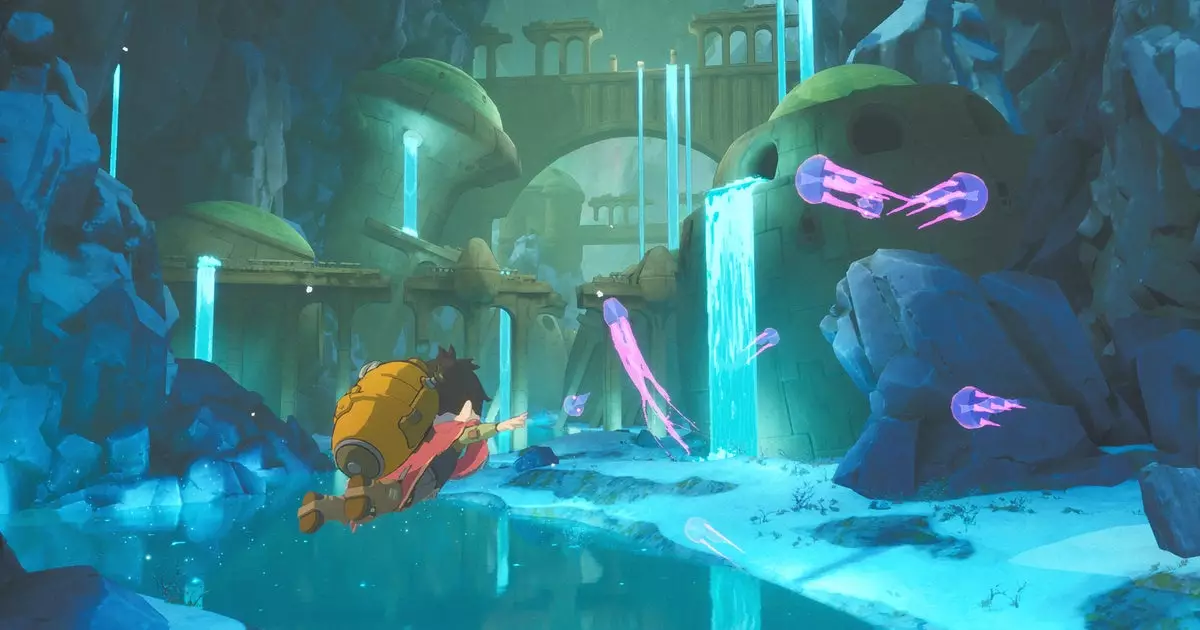Studio Ghibli has long been regarded as a hallmark of emotional storytelling and stunning visual artistry in animation. The distinct charm found in Ghibli films—the gentle rustling of grass in a sun-drenched meadow or characters soaring through expansive skies—has inspired various forms of media, including video games. Among these endeavors is “Europa,” a newly launched puzzle-adventure game that invites players to immerse themselves in a world replete with ethereal landscapes reminiscent of Ghibli’s enchanting realms.
In Europa, players assume the role of Zee, an android that embarks on an adventurous journey across sky islands. The game promises an engaging experience, with gameplay lasting approximately 3 to 4 hours, where exploration and puzzle-solving take center stage. The movement system is particularly noteworthy, as it allows players to upgrade Zee’s capabilities, from jetpacking across the horizon to navigating between floating islands. This multifaceted approach to gameplay hints at a commitment to providing a richly engaging adventuring experience.
However, while the game incorporates familiar Ghibli-like visuals and themes, it raises an important question regarding its relationship with the source material. Many Ghibli-inspired games risk diluting the depth and emotional resonance found in the original works. While Europa is aesthetically pleasing, one might wonder whether it successfully captures the poignant sense of wonder and nostalgia that defines its source of inspiration.
Helder Pinto, the artist behind Europa’s captivating landscapes, originally conceived this project while working as an environment artist for Blizzard on titles like Overwatch. The artistic mastery on display in the game is apparent, as players are invited into a vibrant world awash in color and character. Yet, there is an ongoing challenge for games that draw from the Ghibli well. How can they deliver an experience that transcends mere visual imitation? Pinto’s artistic direction has the potential to elevate the game’s charm, but we must assess whether it moves beyond transitory nostalgia.
As those familiar with Ghibli-inspired games know, many titles share a similar fate of aesthetic mimicry. For instance, while “Ni no Kuni: Wrath of the White Witch” offers a captivating experience enriched by Ghibli’s animation and Joe Hisaishi’s orchestral score, the game at times leans heavily into a formulaic fantasy narrative. This raises the critical question: can Europa break this pattern, or will it too fall victim to the trope-laden structure?
The answer remains to be seen. Given the brief nature of the experience, there’s an opportunity for Europa to forge its own path in the gaming landscape. By focusing on player agency and the exploration of meaning within its splendid art, it could deliver a novel experience that resonates on a deeper level.
Ultimately, while Europa draws heavily on the familiar Ghibli aesthetic, its true potential lies not just in its enchantingly crafted world but in how it chooses to engage players both emotionally and mechanically. With an accessible price point and a commitment to exploration and creativity, the game opens the door for a unique journey—one that beckons players to discover not only the beauty of its landscapes but perhaps a revitalization of the themes that made Ghibli’s stories resonate so deeply. As we venture into this new fantastical world, only time will tell if Europa stands as a noteworthy tribute or another fleeting homage to the magic of Studio Ghibli.

